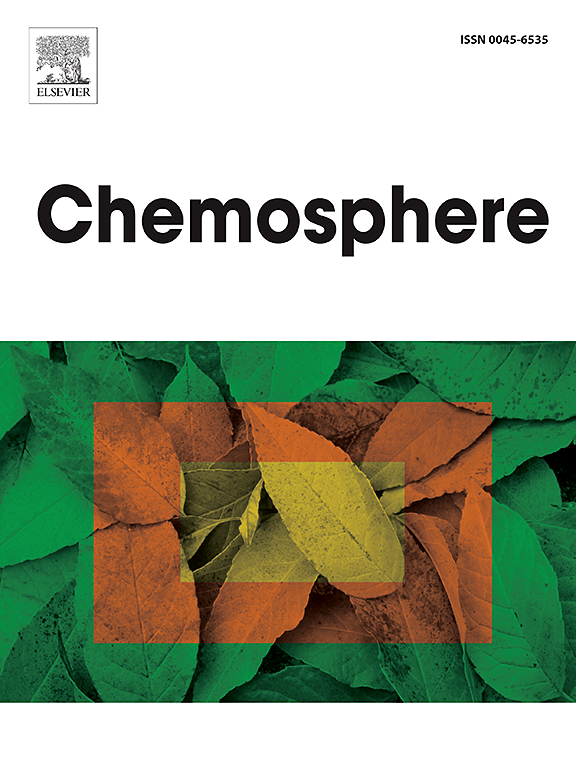Glomalin-related soil protein produced by arbuscular mycorrhizal fungi: its role in Pb stabilization at heavily contaminated sites
IF 8.1
2区 环境科学与生态学
Q1 ENVIRONMENTAL SCIENCES
引用次数: 0
Abstract
Glomalin-related soil protein (GRSP), produced by arbuscular mycorrhizal fungi (AMF), plays a key role in stabilizing potentially toxic elements. This study evaluated the impact of Pb contamination on GRSP content in rhizosphere soil and its contribution to Pb binding at heavily contaminated sites. AMF colonization, spore density, and AMF species richness and diversity were also assessed. Additionally, methodological tests were conducted to evaluate the suitability of protocols for quantifying the amount of Pb bound to GRSP. Soil and root samples were collected from three dominant plant species at 20 locations near an abandoned Pb smelter, along with three uncontaminated locations. A Pb concentration gradient (149.28-77,588.77 mg kg−1) was identified. GRSP, classified into easily extractable (EE-GRSP: 0.46–1.75 mg g−1) and total (T-GRSP: 1.22–3.89 mg g−1), was detected at all sites. GRSP content was not directly affected by Pb contamination, but showed a positive association with AMF richness and diversity. The abundance of the morphospecies Acaulospora rehmii, A. scrobiculata, Entrophospora infrequens, Funneliformis geosporus, and Racocetra fulgida correlated positively with T-GRSP. Reliable quantification of Pb bound to GRSP required protein precipitation followed by dialysis. Pb bound to T-GRSP (2.03–548.54 mg g−1) increased with soil Pb, while the percentage of soil Pb retained by GRSP decreased (23.13–1.04 %). Nevertheless, the same amount of T-GRSP bound 77 times more Pb in the most contaminated location compared to the least. Therefore, enhancing the GRSP pool, particularly through AMF morphospecies related to higher GRSP content, may be a key strategy for AMF-assisted phytoremediation.

丛枝菌根真菌产生的与glomalin相关的土壤蛋白:在重污染场地稳定铅中的作用
丛枝菌根真菌(AMF)产生的Glomalin-related soil protein (GRSP)在稳定潜在有毒元素中起关键作用。本研究评价了铅污染对根际土壤GRSP含量的影响及其对重度污染位点Pb结合的贡献。AMF定植、孢子密度、AMF物种丰富度和多样性也进行了评估。此外,还进行了方法学试验,以评估量化与GRSP结合的铅量的方案的适用性。在一个废弃的铅冶炼厂附近的20个地点以及三个未受污染的地点收集了三种优势植物的土壤和根系样本。Pb浓度梯度为149.28 ~ 77,588.77 mg kg−1。所有位点均检测到易提取的GRSP (EE-GRSP: 0.46 ~ 1.75 mg g−1)和总GRSP (T-GRSP: 1.22 ~ 3.89 mg g−1)。GRSP含量不受Pb污染的直接影响,但与AMF丰富度和多样性呈正相关。形态种Acaulospora rehmii、A. scrobiculata、Entrophospora infrequens、gegeosporus和Racocetra fulgida的丰度与T-GRSP呈正相关。与GRSP结合的铅的可靠定量需要蛋白沉淀和透析。与T-GRSP结合的Pb含量(2.03 ~ 548.54 mg g−1)随土壤Pb含量的增加而增加,而GRSP对土壤Pb的保留率则下降(23.13 ~ 1.04%)。然而,在污染最严重的地方,相同量的T-GRSP结合的铅是污染最轻的地方的77倍。因此,加强GRSP库,特别是通过与高GRSP含量相关的AMF形态物种,可能是AMF辅助植物修复的关键策略。
本文章由计算机程序翻译,如有差异,请以英文原文为准。
求助全文
约1分钟内获得全文
求助全文
来源期刊

Chemosphere
环境科学-环境科学
CiteScore
15.80
自引率
8.00%
发文量
4975
审稿时长
3.4 months
期刊介绍:
Chemosphere, being an international multidisciplinary journal, is dedicated to publishing original communications and review articles on chemicals in the environment. The scope covers a wide range of topics, including the identification, quantification, behavior, fate, toxicology, treatment, and remediation of chemicals in the bio-, hydro-, litho-, and atmosphere, ensuring the broad dissemination of research in this field.
 求助内容:
求助内容: 应助结果提醒方式:
应助结果提醒方式:


